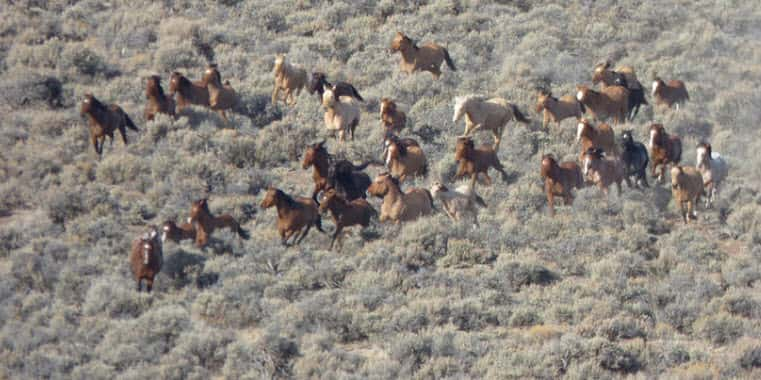WASHINGTON (Oct. 28, 2016) – In a report from the Office of Inspector General for the Department of the Interior, the OIG found the Bureau of Land Management’s wild horse and burro program does not maximize efficiencies and is not compliant with federal regulation. Public Lands Council President and Utah rancher, Dave Eliason, said this report confirms what public lands ranchers have long known to be true.
“The fact is that wild horse and burro populations are growing at unsustainable rates on our nation’s public lands,” said Eliason. “The unchecked growth of these populations threatens the productivity of public grasslands and the health and welfare of the wild horse and burro populations. The BLM’s solution has been to move more of these wild horses and burros off the range and into short-term holding facilities, some horses being held in those facilities for an average of five years, rather than transporting horses to the under-utilized long-term holding facilities. The OIG report points out that this solution is not financially sustainable or efficient.”
The BLM was charged under the Wild Free-Roaming Horse and Burros Act of 1971 with managing and protecting the nation’s wild horses and burros. Under BLM’s management, horse and burro populations have exponentially exceeded the appropriate management levels and continue to grow at a rate of 20 percent per year. Additionally, 45,000 horses and burros remain in long-term holding facilities at a cost to taxpayers of $50,000 per animal.
“It is clear that we must manage our wild horse and burro population to ensure we meet sustainable appropriate management levels,” said Eliason. “Earlier this year the BLM’s own Wild Horse and Burro Advisory Board recommended selling horses to private owners and euthanizing animals that cannot be sold. Wild horses and burros are a part of our nation’s heritage, but no one wins when these populations outgrow the resources available.”
OIG recommends BLM develop and implement policy to use appropriate rate determinations and adjustments for wild horse and burro populations and a plan for sustainable on and off-range population management. The report finds that implementing these strategies and maximizing the transition to long-term facilities would save taxpayers $3.7 million. PLC urges the BLM to allow for the sale of wild horses and restore a thriving ecological balance.
Source: National Cattlemen's Beef Association





